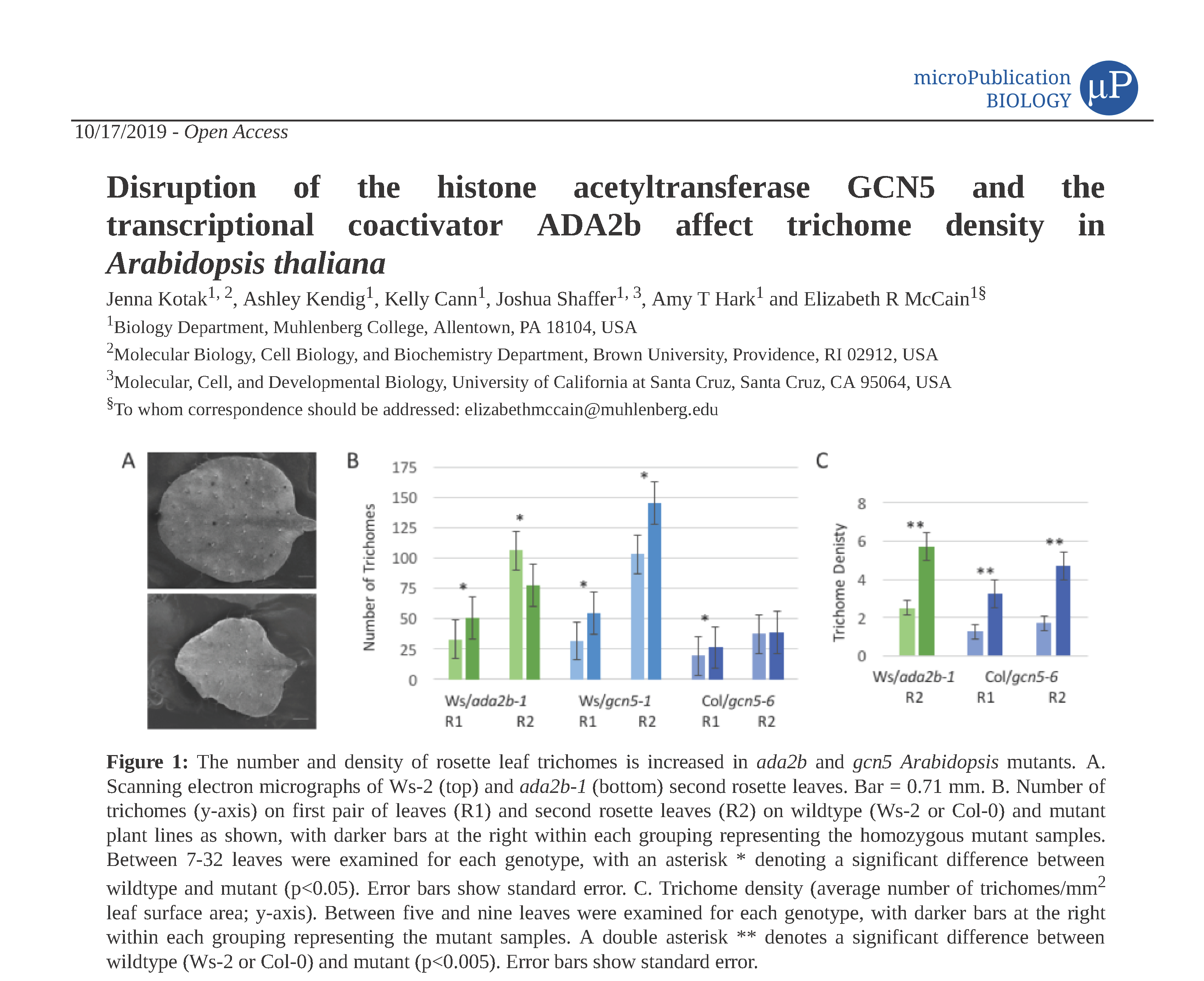Guest post by Amy T. Hark, Muhlenberg College
Scientific training is largely built on mentoring relationships, often beginning at the undergraduate level. Students have found increasing opportunities to engage in research and the benefits including promoting engagement and retention are well documented. But what parts of the research process do undergraduates typically have access to? Data collection and initial analysis – the middle of the process – likely are at the top of the list. Critical initial steps including developing questions and experimental design require knowledge of specialized literature and techniques that students are unlikely to bring to a research program. Furthermore, for an increasing number of students involved in Course-Based Undergraduate Research Experiences, much of the research plan is established by an instructor before an academic term begins. But here I want to focus on the latter steps of a research project. While students may often be able to present their work within a class or in an undergraduate-only meeting or website, opportunities to engage in drafting, revising, and ultimately publishing a peer-reviewed manuscript are much more limited.
Skipping involving undergraduates in these final steps in the scientific process certainly limits opportunities for training and mentoring. But it also prevents students from seeing the tangible outcomes of their work, in the format that they are being taught to see as the gold standard of scientific knowledge – a publication that has been reviewed by experienced peers. Questions as to how this affects students’ developing scientific identity follow. And missed opportunities or potential negative effects on students are not the only undesirable impact: inability to share our results quickly and fully with others in the community limits the scientific process itself.

What to do? I judge that mismatch between the time constraints of an undergraduate research career and the scope of most publications is one key factor in limiting full student involvement in authorship. One solution: our group recently sought to report our research results in a more manageable micropublication format. Working with staff at microPublication Biology and TAIR, we were the first to publish Arabidopsis research in this online, peer-reviewed journal that has been used more extensively in the D. melanogaster and C. elegans research communities. Micropublications typically report data from a single experiment (one figure) and include brief results and methods. The goal is contribution to scientific knowledge in an inclusive and timely fashion. microPublication Biology articles include links to the relevant gene/allele records at TAIR and are easily discoverable in PubMed.
In terms of benefits for science education and research training, the micropublication format allows students to take more ownership of manuscript preparation. Students in my lab were capable of analyzing and representing their own data in ways that could be included in microPublication Biology figures (Figure 1). It was also manageable for them to draft methods focused on a single experiment that the student had carried out. Finally, the narrative descriptions in these publications typically included 7-8 references, representing a reasonable literature review for an undergraduate student (Figure 2).

Beyond preparing a manuscript for submission, full engagement in the peer review process is also valuable for students. Questions posed by reviewers can push students to clarify their presentation, recognize limits to their work, and consider next questions, in ways beyond what their PI and labmates can. A note to reviewers: my students also appreciated seeing supportive comments about their research (don’t we all?). Importantly, microPublication Biology invites submissions from all researchers, so an undergraduate’s findings are subject to the same review and curation process and published alongside work from established members of the research community.
The micropublication format provides benefits beyond professional education of students. Alongside calls for greater clarity in the roles of authors listed on a scientific publication, reports have indicated that there is little training in or agreement on what is required of co-authors. Engaging students in multiple aspects of scientific authorship could help open dialogue between undergraduates, graduate students, and mentors about this topic. And perhaps especially relevant for faculty at primarily undergraduate colleges and at smaller or less-resourced universities, this process provides a mechanism to publish peer-reviewed data more quickly and, in the case of microPublication Biology, in an open access format with no associated fees.
To date, at least 10 reports of Arabidopsis research have been published in microPublication Biology, the only plant species accepted thus far. One hallmark of these papers is that the data is curated and integrated into scientific databases (e.g. TAIR), and the editors invite dialogue to establish collaborations with additional research communities. So, colleagues who work in maize, rice, Chlamydomonas, or other established systems, please consider reaching out, as I did. I hope the number of micropublications focused on plant biology will grow as we embrace this format. With the documented benefits and perceived barriers to involving undergraduates in traditional scientific authorship, there is potential to impact many who are just beginning their work with us as scientific colleagues. But I also believe that the micropublication format is an option for scientific communication that supports not only students, but the entire scientific community.
 Amy Hark is Professor of Biology at Muhlenberg College in Allentown, PA. She thanks her co-authors on the micropublications as well as Tanya Berardini (TAIR), Daniela Raciti (microPublication Biology), Leonore Reiser (TAIR), and Karen Yook (microPublication Biology) for their feedback on and support of this work.
Amy Hark is Professor of Biology at Muhlenberg College in Allentown, PA. She thanks her co-authors on the micropublications as well as Tanya Berardini (TAIR), Daniela Raciti (microPublication Biology), Leonore Reiser (TAIR), and Karen Yook (microPublication Biology) for their feedback on and support of this work.
